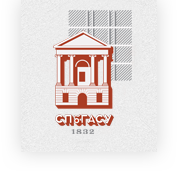The Transcendence of Traditional Concepts in Modern Chinese and Western Painting
DOI:
https://doi.org/10.63313/LLCS.9036Keywords:
Modern Art, Chinese Painting, Western Painting, Transcendence, Cross-Cultural Influences, AbstractionAbstract
This study investigates the transcendence of traditional aesthetic concepts in modern Chinese and Western painting practices. It addresses a gap in comparative art studies by focusing specifically on how artists in both traditions move beyond established norms. The research employs a comparative analysis of selected artworks, examining the reinterpretation of traditional techniques, the influence of cross-cultural exchange, and the embrace of abstraction and conceptual art. It argues that modern Chinese painting transcends tradition through the integration of Western methods while retaining Chinese philosophical elements. Simultaneously, modern Western painting achieves transcendence by adopting abstraction and challenging representational conventions. Despite differing cultural origins, artists in both spheres share a commitment to expanding artistic boundaries and questioning established norms. The study finds that this transcendence is not a complete abandonment of the past, but rather a reimagining of traditional components to reflect contemporary realities. The research contributes a nuanced understanding of the evolving definitions of beauty and artistic value in modern art, shaped by social, political, and technological shifts. It offers insights into the shared and distinct approaches of Chinese and Western artists in their pursuit of artistic innovation.
References
[1] Arnason, H. H. (1998). History of Modern Art: Painting, Sculpture, Architecture, Photog-raphy (4th ed.). Harry N. Abrams.
[2] Arnason, H. H., & Prather, M. (2013). History of modern art: Painting, sculpture, architec-ture, photography. Pearson Prentice Hall.
[3] Arnason, H. H., & Mansfield, E. (2013). History of modern art. Pearson Prentice Hall.
[4] Andrews, J. F. (1994). Painters and politics in the People's Republic of China, 1949-1979. University of California Press.
[5] Andrews, J. F. (2017). Art, China, and the World: Cultural Exchanges in the 20th and 21st Centuries. Brill.
[6] Barnhart, R. M. (1997). Three thousand years of Chinese painting. Yale University Press.
[7] Berger, J. (1965). Success and Failure of Picasso. Penguin Books.
[8] Bush, S., & Shih, H. (1985). Early Chinese texts on painting. Harvard University Press.
[9] Chilvers, I. (2005). The Oxford Dictionary of Art and Artists (3rd ed.). Oxford University Press.
[10] Daix, P. (1993). Picasso: Life and Art. Thames & Hudson.
[11] Dietrich, D. R. (1993). The Collages of Kurt Schwitters: Tradition and Innovation. Cam-bridge University Press.
[12] Fry, E. F. (1966). Cubism. McGraw-Hill.
[13] Galitz, D. (2004). Photography redefined: Theories and influences. Allworth Press.
[14] Golding, J. (1968). Cubism: A History and an Analysis, 1907-1914. Faber & Faber.
[15] Gombrich, E. H. (2006). The Story of Art. Phaidon Press.
[16] Goldberg, R. (2011). Performance Art: From Futurism to the Present. Thames & Hudson.
[17] Greenberg, C. (1961). Art and Culture: Critical Essays. Beacon Press.
[18] Guilbaut, S. (1983). How New York stole the idea of modern art: Abstract expressionism, freedom, and the Cold War. University of Chicago Press.
[19] Hayward Gallery. (2001). Art and China. Ostfildern: Hatje Cantz.
[20] Harrison, C., & Wood, P. (2003). Art in theory 1900-2000: An anthology of changing ideas. Blackwell Publishing.
[21] Hui-Chun, S. (2018). The Daoist Aesthetics of Emptiness: Implications for Landscape Painting. Journal of Chinese Philosophy, 45(3-4), 447-464.
[22] Irvine, M. (2018). The algorithmic turn: How the internet is rewriting our lives. Yale Uni-versity Press.
[23] Munro, T. (1969). Oriental aesthetics. Case Western Reserve University.
[24] Munro, T. (1989). Oriental aesthetics. Greenwood Press.
[25] Rewald, J. (1973). The history of Impressionism. Museum of Modern Art.
[26] Richardson, J. (1991). A Life of Picasso, Volume I: 1881-1906. Random House.
[27] Rosenblum, R. (1976). Modern painting and the Northern Romantic tradition: Friedrich to Rothko. Harper & Row.
[28] Sayre, H. M. (2018). A World of Art. Pearson.
[29] Silbergeld, J. (2009). Mirroring the west: The influence of French art on Yuan and early Ming Chinese painting. University of Washington Press.
[30] Stallabrass, J. (2006). Contemporary art: A very short introduction. Oxford University Press.
[31] Stangos, N. (1994). Concepts of Modern Art (3rd ed.). Thames and Hudson.
[32] Stangos, N. (Ed.). (1994). Concepts of Modern Art. Thames and Hudson. (Note: This is a du-plicate entry; only one should be included in the final list.)
[33] Sullivan, M. (1974). The Arts of China. University of California Press. (Note: This is a dupli-cate entry; only one should be included in the final list.)
[34] Sullivan, M. (1974). The arts of China. University of California Press. (Note: This is a dupli-cate entry with different capitalization; only one should be included in the final list.)
[35] Sullivan, M. (2006). The art of China. University of California Press.
[36] Sullivan, M. (2006). Art and artists of twentieth-century China. University of California Press.
[37] Sullivan, M. (2006). Art and Artists of Twentieth-Century China. University of California Press. (Note: This is a duplicate entry with different capitalization; only one should be in-cluded in the final list.)
[38] Sullivan, M. (2006). The Arts of China. University of California Press. (Note: This is a dupli-cate entry; only one should be included in the final list.)
[39] Varnedoe, K., & Karmel, P. (2003). Jackson Pollock: New Approaches (Studies in the His-tory of Art). Museum of Modern Art.
[40] Watts, A. (1963). The way of Zen. Vintage.
Downloads
Published
Issue
Section
License
Copyright (c) 2025 by author(s) and Erytis Publishing Limited.

This work is licensed under a Creative Commons Attribution-ShareAlike 4.0 International License.















